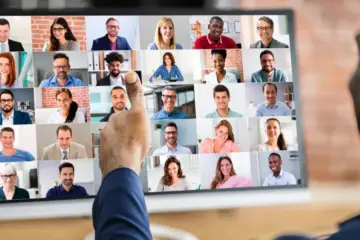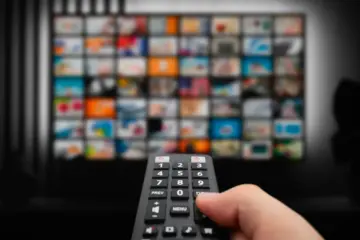In 2025, the face of healthcare is being rewritten—not in operating rooms, but in real-time video calls. A mother in a remote village now consults a pediatrician in minutes. An elderly patient receives a post-surgery follow-up from the comfort of his home. A mental health therapist leads a session with calm and compassion through a secure stream.
What’s powering this revolution? Real-time video technology.
As we step deeper into the digital health era, real-time video streaming—once a futuristic idea—is now a powerful tool improving patient care across the globe. And at the forefront of this shift is Ant Media, delivering lightning-fast, ultra-low latency streaming infrastructure that brings doctors and patients face-to-face in milliseconds.
Let’s explore how real-time video is transforming telemedicine and patient outcomes in 2025—and why this matters for everyone, from physicians and health systems to families and rural clinics.
The Rise of Real-Time Video in Healthcare
Telehealth isn’t new. But in 2025, it’s no longer a backup plan—it’s the default choice for many types of care. The global telemedicine market is projected to exceed $250 billion, with real-time video as its backbone. What makes real-time video different is its ability to replicate the immediacy and intimacy of in-person visits, with all the flexibility of digital tools.
Unlike traditional video conferencing, which may suffer from delays, jitters, and poor sync, real-time streaming—especially when delivered with sub-second latency—offers instant, smooth, and clear communication.
And when it comes to healthcare, every second matters.
How Real-Time Video Improves Patient Outcomes
1. Faster Diagnoses, Better Decisions
Doctors can see, listen, and assess a patient’s condition immediately—whether it’s a visible rash, labored breathing, or facial asymmetry in a stroke case. With real-time video, healthcare professionals aren’t guessing—they’re reacting live and accurately, leading to better decisions and faster interventions.
2. Critical Care in Crisis Zones
In disaster zones, war areas, or remote regions where specialists aren’t available, real-time video enables remote triage and specialist guidance. Medical teams can collaborate instantly across continents, saving lives when minutes count.
3. Remote Monitoring with Real-Time Precision
Chronic disease management and post-op recovery now benefit from live check-ins. Vital signs, symptoms, and patient progress can be monitored in real time by healthcare providers who are ready to respond at the first sign of trouble.
4. Better Mental Health Access
Therapists and psychiatrists now offer secure, real-time video sessions, breaking down stigma and barriers. Ant Media’s secure streaming ensures privacy-first virtual environments—vital for building trust and therapeutic rapport.
Why Ant Media Is the Engine Behind Healthcare’s Video Revolution

Most video platforms aren’t designed for critical applications like healthcare. Ant Media stands apart with its ultra-low latency, secure, and scalable infrastructure, purpose-built for industries where milliseconds matter.
Here’s why it’s the telehealth backbone of choice for providers, startups, and enterprises in 2025:
Sub-Second Latency for Real-Time Responsiveness
- Ant Media Server enables under 0.5 seconds latency, which means conversations feel natural and diagnostic interactions happen without delays.
- Emergency consultations
- Multi-user diagnostics
- Interactive surgical assistance
HIPAA-Ready & Secure Streaming
Trust is paramount in healthcare. Ant Media ensures encrypted, GDPR- and HIPAA-compliant streams to safeguard patient privacy. Every interaction is protected, meeting the strictest global standards for health data transmission.
Multi-Platform Compatibility
Patients can join a session from mobile phones, tablets, smart TVs, or desktops—with no downloads needed. This frictionless experience boosts adoption, especially among elderly or non-tech-savvy users.
Real-Life Applications: Telehealth in Action
Rural Clinics, Global Reach
In underserved regions, Ant Media-powered telehealth apps connect local nurses with top-tier specialists in real time. Whether it’s a complex cardiac consult or a dermatological issue, expert guidance is a stream away.
Emergency Medical Services (EMS)
Paramedics now carry body cams and mobile devices streaming live to ER teams. Physicians can prepare for incoming trauma cases before the patient even arrives, saving precious minutes.
Pediatric Virtual Rounds
Children’s hospitals use real-time video for remote rounds, allowing top specialists to check on newborns in neonatal units from across the country—supporting local teams while minimizing exposure risks.
Neurology & Stroke Management
In stroke care, time is the brain. Neurologists now assess patients remotely in real time, directing tPA administration or transport decisions without waiting for an on-site visit.
The Future: Beyond Just Streaming
In 2025 and beyond, real-time video in healthcare won’t be just about communication—it will be about comprehensive patient engagement. Expect these advancements:
Virtual Care Rooms with Integrated Data
Imagine logging into a virtual room where your vitals, EHR, lab results, and live video consult are seamlessly integrated. No toggling between apps. Just care, delivered holistically.
Decentralized Data Storage for Privacy
Technologies like edge computing and blockchain will enable more secure, localized data storage, reducing breach risks while maintaining instant video streaming.
Why Trust Matters More Than Ever
In healthcare, trust is everything. Patients must know their data is secure. Doctors must trust the video stream won’t fail mid-consultation. And platforms must prove they’re built with clinical-grade reliability.
Ant Media earns this trust through transparency, robust technology, and a commitment to empowering care—not just enabling communication. Its platform is backed by expert developers, trusted by medical innovators, and tested in the most demanding real-world scenarios.
How to Get Started with Real-Time Telehealth
If you’re building a telehealth solution or upgrading your hospital infrastructure, now is the time to explore what real-time video can truly offer.
Ant Media offers:
- Free trials to test real-world latency
- Enterprise support for compliance, scaling, and reliability
- Open-source flexibility for developers and startups
By adopting Ant Media’s streaming solutions, healthcare providers can elevate patient care, reduce costs, and create a future-ready digital experience.
Frequently Asked Questions (FAQs)
How does real-time video improve patient care?
Real-time video enables immediate, face-to-face communication between patients and healthcare providers, allowing faster diagnoses, better triage, and more personalized care—especially in emergencies or remote areas.
Is real-time video secure enough for healthcare?
Yes. Platforms like Ant Media are HIPAA-compliant and use encrypted streaming to protect sensitive medical data, making them safe for clinical use.
What’s the difference between telehealth and video conferencing?
Video conferencing tools like Zoom are general-purpose. Telehealth platforms like those built with Ant Media are designed for medical use, with lower latency, higher security, and better integration with healthcare systems.
Can real-time video work in low-bandwidth areas?
Yes. Ant Media supports adaptive bitrate streaming, ensuring a smooth experience even in low-infrastructure settings like rural regions or mobile networks.
What kind of healthcare providers use real-time video?
Hospitals, private clinics, mental health professionals, EMS units, and even solo practitioners are leveraging real-time video to deliver faster, more effective care.
Final Thoughts: The Future of Health Is Streaming—Live
Healthcare in 2025 isn’t just happening in clinics or hospitals—it’s happening wherever there’s a screen and a signal. Real-time video is closing distances, democratizing access, and making expert care available to anyone, anywhere.
Ant Media is not just building a platform—it’s powering a movement. One where every patient matters, every second counts, and every interaction feels human, helpful, and healing.
If you’re ready to be part of the transformation, the future is streaming—and it’s live.
Estimate Your Streaming Costs
Use our free Cost Calculator to find out how much you can save with Ant Media Server based on your usage.
Open Cost Calculator

